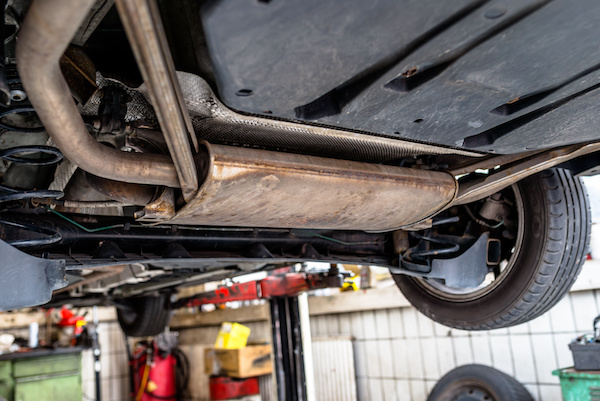
Beneath the metal body of your vehicle lies a device as crucial to environmental health as it is to automotive function—the catalytic converter. This component works tirelessly, transforming harmful exhaust gasses into less toxic substances before they ever reach the open air. But how does it actually operate, and why is its role so integral to both our cars and our planet?
Understanding the Catalytic Converter
Basically, a catalytic converter is an emissions control device that reduces the pollutants emitted from a vehicle's exhaust system. It does this through a simple yet ingenious process known as catalytic conversion. Mounted within the exhaust system, it is strategically placed between the engine and the muffler to ensure maximum exposure to exhaust gasses.
The key components of any catalytic converter are catalyst substances like platinum, palladium, and rhodium. These precious metals line the interior surface of the converter's chambers—surfaces that are engineered to maximize area for reactions. As exhaust gasses flow through these coated passages, chemical reactions occur that convert noxious gasses such as carbon monoxide (CO), nitrogen oxides (NOx), and hydrocarbons (HC) into less harmful substances like carbon dioxide (CO2), nitrogen (N2), and water vapor (H2O).
Why Catalytic Converters Are Vital
The importance of catalytic converters cannot be understated. By reducing harmful emissions:
They Protect Public Health
Carbon monoxide, hydrocarbons, and nitrogen oxides have been linked to respiratory illnesses and other health problems in humans. By converting these gasses into less hazardous compounds, catalytic converters play an essential role in minimizing public health risks.
They Reduce Environmental Impact
These converters are pivotal in limiting pollutants that contribute to smog formation and acid rain—environmental issues that have far-reaching effects on ecosystems and biodiversity.
They Help Meet Emission Standards
Governments around the world enforce strict emission regulations for vehicles; catalytic converters help manufacturers comply with these standards.
The Journey Through a Converter
When your car is running, here's what happens inside this critical piece of equipment:
Nitrogen oxide molecules enter the converter and meet with the catalyst; they lose their oxygen atoms, which then bind with hydrogen atoms, creating H2O or with carbon atoms, forming CO2.
Carbon monoxide and hydrocarbons collide with more oxygen present inside the converter—a reaction facilitated by catalysts—and are transformed into carbon dioxide and water vapor.
Maintaining Your Catalytic Converter
Like any other part of your car, keeping your catalytic converter in good condition ensures its effectiveness. Symptoms of a failing or clogged converter include reduced engine performance, increased fuel consumption, or an unmistakable sulfur-like smell from the exhaust.
Proper maintenance involves:
- Regular checks during service appointments
- Ensuring you use the correct type of fuel for your vehicle
- Avoiding fuel additives that may contain materials harmful to your converter
- Keep an eye out for engine misfires that can damage it internally.
The team at Village Transmission & Auto Clinic understands how important the catalytic converter is for your vehicle and environment. That's why we want to invite you to come by when your next maintenance appointment is due!